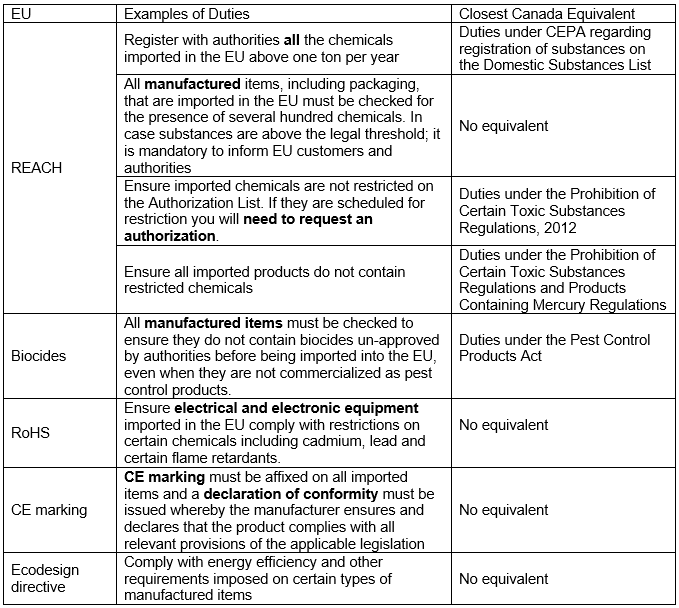Is your company ready to increase its market share on the old continent?
Here is an excellent opportunity for you. Indeed, the Comprehensive Economic and Trade Agreement (CETA), approved by the European Union (EU) Parliament on February 15th, 2017, is a free trade deal between the EU and Canada.
According to an overview of the CETA provided by the Canadian government, the agreement would eliminate up to 99 per cent of all tariffs on goods traded between Canada and the EU. For instance, all of Canada’s telecommunication goods and, with a few exceptions, all industrial goods will become duty free. That would provide Canadian exporters “with a clear economic advantage” over other countries which also export their products to Europe. It is expected that the agreement will increase trade between Canada and the EU and create new opportunities for business.
Undoubtedly, CETA has been one of the most scrutinized and challenged free trade agreements with regards to the safeguards it offers for environmental, health and safety protection and sustainable development. This is partly because Canada is perceived by the European civil society as having lower standards than the EU in these areas, leading some members to fear that Canada could block EU’s ambitious environmental policies through CETA. To address these concerns CETA explicitly reaffirm the right of a country to implement regulations regardless of whether these negatively affect an investment or investor’s expectations of profit. In addition, it specifies each partner shall strive to continue to improve its environmental laws and policies.
Is it true that the EU environmental regulations are overall more stringent than Canada’s?
Canada was traditionally recognized as the leading nation on environmental matters and is signatory to all the major international conventions and treaties. Nevertheless over the last decade, the EU has pursued a much more aggressive stance and has stolen the crown. A Conference Board study of 9,000 Canadian companies exporting to Europe suggests that many have found it difficult in the past to adapt to EU norms which are different from those in North America.
Part of the difference comes from several key areas:
- the EU implements more aggressively the precautionary principle when setting regulation. One way to verify this is by looking at the large number of chemicals that have been severely restricted since the implementation of the Regulation (EC) No 1907/2006 on the Registration, Evaluation, Authorization and Restriction of Chemicals (REACH) ,although the same chemicals continue to be widespread in other jurisdictions, including Canada.
- the “no data no market” rule (Article 5 of REACH): companies are required to generate and provide more data on the health, safety and environmental risks associated with their products than in any other jurisdictions. Lack of proper disclosure may prevent them from accessing the EU market.
- the EU decided to apply environmental regulations not only to manufacturing activities on European territory but also to the manufactured items imported from outside of the Union.
A quick check on the Canada’s Trade Commissioner’s website provides a list of regulations to be considered when exporting to the EU. However what is not always clear is how they compare to the existent Canadian regulations. In order to shed some light on the matter, here are some non-exhaustive examples of EU duties that differ to various degrees from Canadian ones*:
* The above table is provided for illustration purposes only and is not intended to represent legal counsel and should not be considered as being legal counsel. In particular it should be noted that EU and Canadian regulations provided above as examples differ significantly from one another and only a detailed review of each legislation can provide a full understanding of the respective legal duties and obligations.
What does it mean for Canadian companies?
This means that Canadian companies may face an important compliance gap, exposing themselves to financial, legal or reputational risk, making them less competitive in the EU. As mentioned by Danielle Goldfarb, Associate Director at the Conference Board of Canada,: “the CETA is a new type of trade deal that should meaningfully reduce tariffs and also other commercial barriers. But even with these barriers reduced or gone, it will still be up to Canadian companies to adapt and respond to European opportunities and nuances. Those firms that proactively do so will be able to reap the greatest gains from the deal.”
In practice, companies will benefit tremendously if they get prepared by:
- monitoring regulatory changes and understanding which ones apply,
- ensuring more and better traceability of the chemicals that are present in their products and their value chain,
- identifying supply disruption or obsolescence risks caused by substances targeted for phase-out
- being in a position where they can quickly estimate environmental impacts over the life cycle of their product.
By doing so companies will manage to proactively mitigate the risks and costs associated with achieving compliance.
At Carbon Consult Group we believe the adjustment to European environmental legislation can be achieved in a cost effective way and can deliver new business opportunities largely outweighing the initial investments. The main criterion for success is that it is done in a timely manner and with the right level of help and expertise.
by Alexandru Iordan, Director of sustainable finance at Carbon Consult Group, and in collaboration with Ève Boileau, Senior environmental expert at Carbon Consult Group


